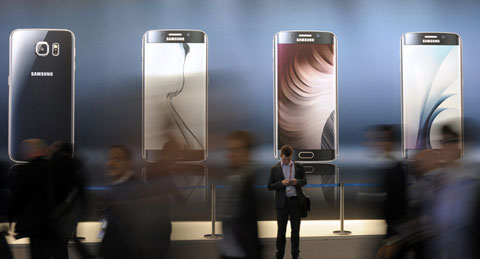

|
A patient undergoes gua sha treatment, one of the oldest recorded forms of traditional Chinese medicine treatments. [Wu Pengfei / For China Daily] |
Ancient Chinese medical treatment leaves lasting impressions
Renata Nunziante teaches Italian in Beijing. Lately, because of a hectic work schedule, her shoulder has been feeling heavy, with occasional aches.
"The doctor diagnosed it as early scapulohumeral periarthritis. Taking Western analgesics didn't help. One of my Chinese students suggested that I try gua sha treatment," the middle-aged woman says.
"After a slim tool was used to repeatedly scrape my skin in one direction, my physician told me many purplish spots appeared on the area involved.
"My symptoms were obviously alleviated after undergoing a course of therapy."
The Italian teacher is among an increasing number of patients and physicians at home and abroad who are promoting the benefits of gua sha, one of the oldest recorded forms of traditional Chinese medicine (TCM) treatments.
Gua sha, meaning to "scrape away illness", involves using tools such as bian stone, jade, or ox horn with lubricant liniment to scrape and rub parts of the patient's skin repeatedly in one direction. The aim is to "activate blood circulation to dissipate blood stasis", based on TCM theory.
Historical records on gua sha go back to the Paleolithic Age. When people fell sick or became unconscious, hands or stones were used to rub parts of their body to help alleviate the symptoms of disease.
Gua sha has long been a folk therapy widely used by the ancient Chinese. In the Ming Dynasty (1368-1644), the treatment was systematically written into major medical records.
The use of stones to scrape the skin and treat diseases has been gradually improved throughout the ages, in line with TCM practices.
In 2001, a Chinese movie on gua sha and the Chinese cultural connotations attached to the treatment was released. Gua Sha or The Treatment, starring the Hong Kong actor Tony Leung Ka-Fai, was about cultural conflict in a Chinese family in the United States, in particular a misunderstanding about gua sha.
In the film, a grandfather could not make out medical instructions in English, so he uses traditional Chinese therapy to cure his grandson. The old man leaves scrape marks on the child's back after using gua sha to treat the child's fever, and is later accused of child abuse.
"Gua sha is a completely safe technique," says Max Jonuscheit, a German who has studied traditional Chinese medicine in China for four years. "In Chinese, gua means to scrape or rub, sha is a kind of reddish millet-like petechiae. Sha is the term used to describe blood stasis in the subcutaneous tissue as petechiae. Gua sha is a treatment that intentionally raises the rash or petechiae.
"Gua sha therapy is closely related to the crucial TCM theory of meridians and collateral. The theory provides not only the theoretical foundation for diagnosis, but also guides treatments such as acupuncture, massage, cupping and gua sha."
Gua sha treatment is not painful, adherents say. According to practitioners, as the body is scraped it pushes a build-up of fluid ahead of it, and after it passes, it leaves an indention or vacuum behind that draws toxins out to the surface of the skin from deep within the tissue.
The toxic fluid (sha), floods to the surface and can be seen in small red, deep purple or light green pools of blood. It is also often hot on the area where the "toxic heat" is extracted.
The meridians and collaterals are like the pathways in which the flow of qi and blood circulate. They form a specific network that communicates with the internal organs and limbs and connects the upper to the lower and the exterior to the interior organs of the body.
"Gua sha can stimulate blood flow and remove coldness, negative energy, toxic-heat and promote lymphatic fluid from the body through the skin," Jonuscheit says. "Through the process, more blood serum is produced, and improves the body's immune system. Sometimes, when I go back to Germany, I often use this treatment on my family to remedy some ailment."
The color of the sha is both diagnostic and prognostic. Light-colored sha indicates blood deficiency. If the sha is purple or black, the blood stasis is long-standing. Dark red sha can also indicate heat, Jonuscheit says.
"Gua sha can be used to treat, alleviate and heal chronic degenerative diseases such as migraines, shoulder and back pain, menstrual disorders, insomnia, hypertension, vertigo, chronic infections, sciatica, rheumatoid arthritis and much more," says Liu Chunyan, from the third Affiliated Hospital of Beijing University of Chinese Medicine.
Gua sha is also used whenever a patient has pain associated with an acute or chronic disorder, or when there is an aching or knotty feeling in the muscles, TCM practitioners say. It can be used to similarly treat and prevent the common cold, flu, bronchitis, asthma, as well as any chronic disorder involving pain, congestion of the flow of qi and blood.
Sha is raised primarily at the yang (positive) surface of the body, for example the back, neck, shoulders, buttocks, and limbs. Sometimes, gua sha is applied at the chest and abdomen, according to the TCM diagnosis.
In most cases, the gua sha patient feels an immediate change in consciousness from the treatment. Gua sha motivates the blocked flow of qi and blood, and releases external sweating.
In modern medical terms, these fluids contain metabolic waste that has become congested in the skin surface tissues and muscles. Many consider it to be a valuable treatment for both external and internal pain, facilitating the resolution of both acute and chronic disorders.
Contraindications include hemophilia or bleeding disorders, leukemia, inflamed skin or open wounds. Weak elderly and those who are suffering from menstrual afflictions should also avoid the treatment.
There are two methods of gua sha; and one is called tonifying therapy. "The technique of scraping is slow, moderate and does not draw out sha each time," Liu says.
The other method, called purging therapy, involves heavy, fast rubbing and scraping to bring out as much sha as possible. This is the most common method and can be used to treat common ailments such as fever, influenza and apoplectic sequelae.
"The petechiae should fade in two to four days," Liu says. "Slower fading will indicate poor blood circulation."
yinyin@chinadaily.com.cn
 Top 10 industries with most job-hoppers
Top 10 industries with most job-hoppers
 Asian business aviation show opens in Shanghai
Asian business aviation show opens in Shanghai
 10 Red Dot Award winning carmakers in '14
10 Red Dot Award winning carmakers in '14
 Get a birthday cake for your pets
Get a birthday cake for your pets
 Top 10 most influential tycoons in China
Top 10 most influential tycoons in China
 Bicycle-friendly Hainan hotels cater to riders
Bicycle-friendly Hainan hotels cater to riders
 Top 10 best airlines in the world
Top 10 best airlines in the world
 Apple Watch makes debut in China's Hangzhou
Apple Watch makes debut in China's Hangzhou

